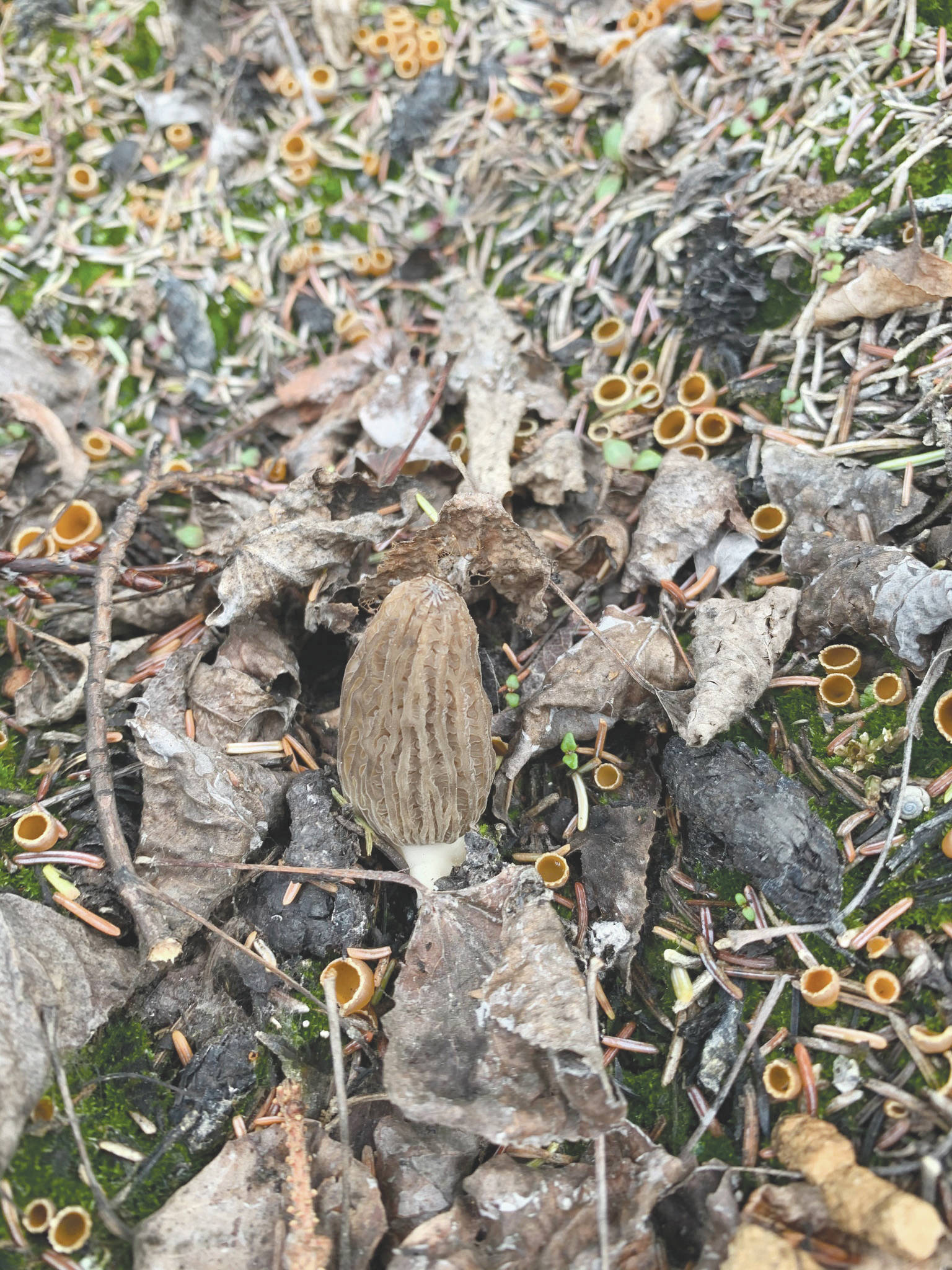While people have been taking advantage of the abundance of morels following last year’s Swan Lake Fire, I have been asked many questions about them.
Why do morels appear after fire? Were they there before the fire or did the spores arrive after the fire? What about the morels that come up in unburned places?
Recently, I have been trying to learn more about what kinds of morels grow here and how they fit in within the ecosystems of the Kenai Peninsula.
It turns out that morels remain mysterious things despite their importance to people and some focused research. They show up in many kinds of places — in recently burned forests, under cottonwoods and around soil disturbances.
Some kinds of morels pop up only in the first few years following fires. Others return reliably at the same spots every spring in undisturbed forests.
The morels that appear in large numbers after fire are believed to be primarily decomposers, breaking down old organic matter. A study of post-fire morels in Oregon and Alaska determined that the carbon that morels had been consuming had been taken from the atmosphere 9 to 17 years before the morels fruited, indicating that these fungi had been breaking down old plant material that had been in the ground for years.
Our current understanding is that the fire-adapted morels live deep within forest soils, storing nutrients in underground structures and waiting for wildfire or some other disturbance to disrupt the ground. The morels can be difficult to detect in the intervening years between fires, but then changes to the soil brought about by wildfires stimulate them to grow rapidly.
Fires kill or at least slow down many soil organisms, but morels are able to flourish in post-fire conditions, growing over the cold months following the fire season. In the spring, when conditions are right, the morels fruit to disperse their spores, producing the familiar morel fruiting bodies that people are out harvesting right now.
Not all morels are strictly decomposers. A number of morel species have been shown to make structures that grow around and into the roots of plants, especially pines and their relatives.
These kinds of interactions often involve the fungi providing nutrients to the plants in exchange for sugars, but we know little about how morels interact with plant roots. We just know that some of them do connect to plant roots and that some morels get energy from living plants.
Researchers found that certain morels in western North America infected non-native cheat grass, the cells of the fungi growing up through the roots of the plants into the aboveground stems. The fungi did not harm the grass.
Instead, infected grasses grew better, produced more seeds, and produced seeds that were more heat resistant than their uninfected counterparts. Strangely, these were native North American morels infecting a non-native grass, in this case apparently making the grass more competitive.
Cheat grass has been reported in the Skilak Lake area where the Swan Lake Fire burned. I wonder if any of our morels will infect cheat grass. I would like to know if the same morel species that infect cheat grass are present here.
Judging by studies of morels from Interior Alaska and other parts of western North America where a variety of species were found, we likely have several kinds of morels in our area, explaining at least part of the variation we see in the appearance and behavior of our local morels.
To date, we have identified only one species from the Kenai Peninsula, a gray morel, one of several post-fire morel species. It can be easily recognized by its thick covering of fine hairs on the ridges of the cap, which can be seen with a good magnifying glass or microscope.
This year I hope to obtain DNA sequences from Kenai Peninsula morels so that we can determine which species are present within the Swan Lake Fire and whether or not these are different than the morels that show up in unburned areas. At the very least, I would like to be able to tell people what kinds of morels they are harvesting and eating.
Matt Bowser serves as Entomologist at Kenai National Wildlife Refuge. Find more Refuge Notebook articles (1999–present) at https://www.fws.gov/refuge/Kenai/community/refuge_notebook.html.
By MATT BOWSER
Kenai National Wildlife Refuge


